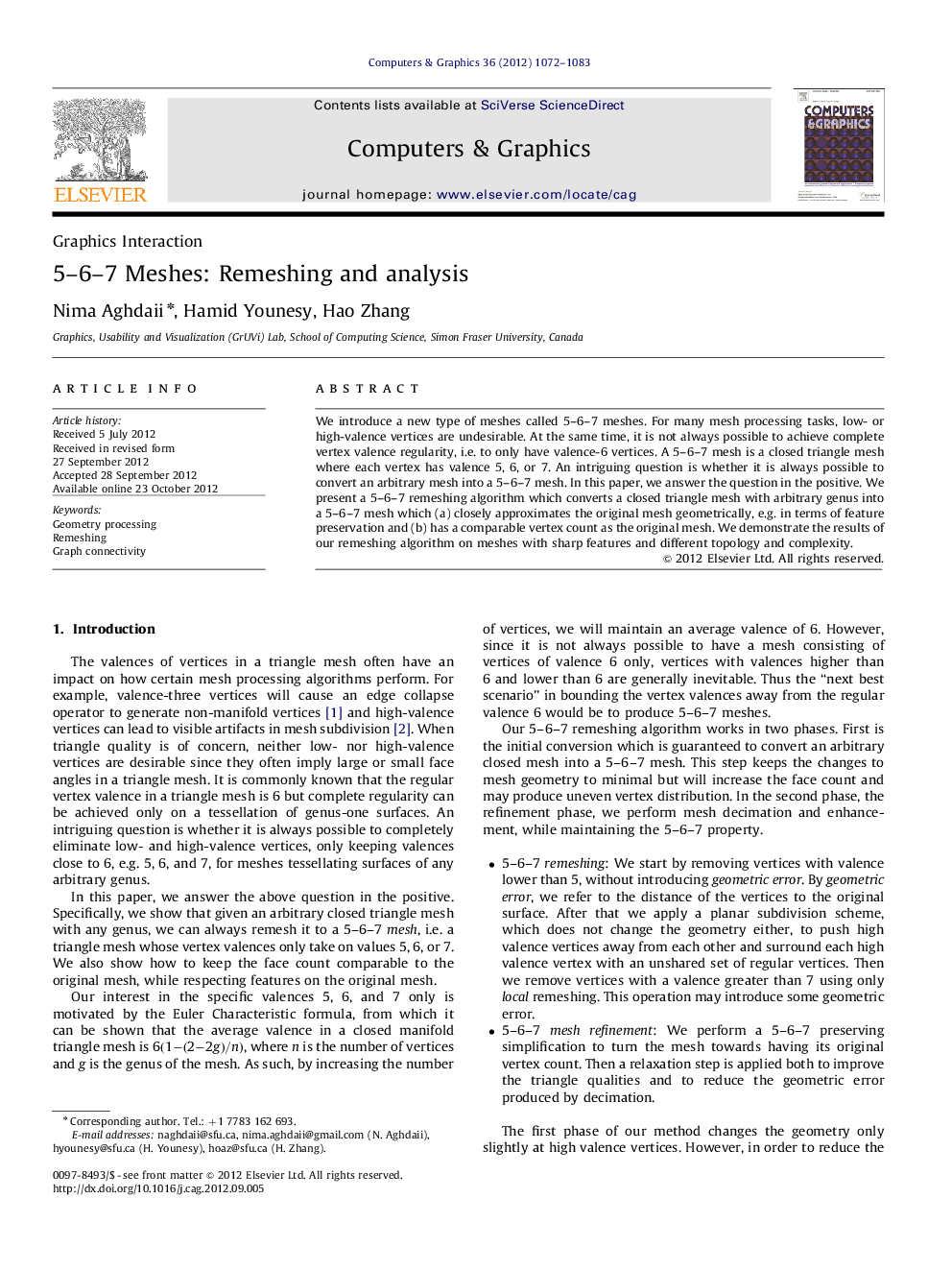| Article ID | Journal | Published Year | Pages | File Type |
|---|---|---|---|---|
| 441523 | Computers & Graphics | 2012 | 12 Pages |
We introduce a new type of meshes called 5–6–7 meshes. For many mesh processing tasks, low- or high-valence vertices are undesirable. At the same time, it is not always possible to achieve complete vertex valence regularity, i.e. to only have valence-6 vertices. A 5–6–7 mesh is a closed triangle mesh where each vertex has valence 5, 6, or 7. An intriguing question is whether it is always possible to convert an arbitrary mesh into a 5–6–7 mesh. In this paper, we answer the question in the positive. We present a 5–6–7 remeshing algorithm which converts a closed triangle mesh with arbitrary genus into a 5–6–7 mesh which (a) closely approximates the original mesh geometrically, e.g. in terms of feature preservation and (b) has a comparable vertex count as the original mesh. We demonstrate the results of our remeshing algorithm on meshes with sharp features and different topology and complexity.
Graphical abstractFigure optionsDownload full-size imageDownload high-quality image (344 K)Download as PowerPoint slideHighlights► Introduction of 5–6–7 mesh, a mesh with only valence-5, 6, and 7 vertices.► Remeshing algorithm to convert a closed triangle mesh with any genus into a 5–6–7 mesh. ► A mesh decimation and geometry enhancement method which preserves the 5–6–7 property. ► Analysis and discussion on the properties of 5–6–7 meshes.
